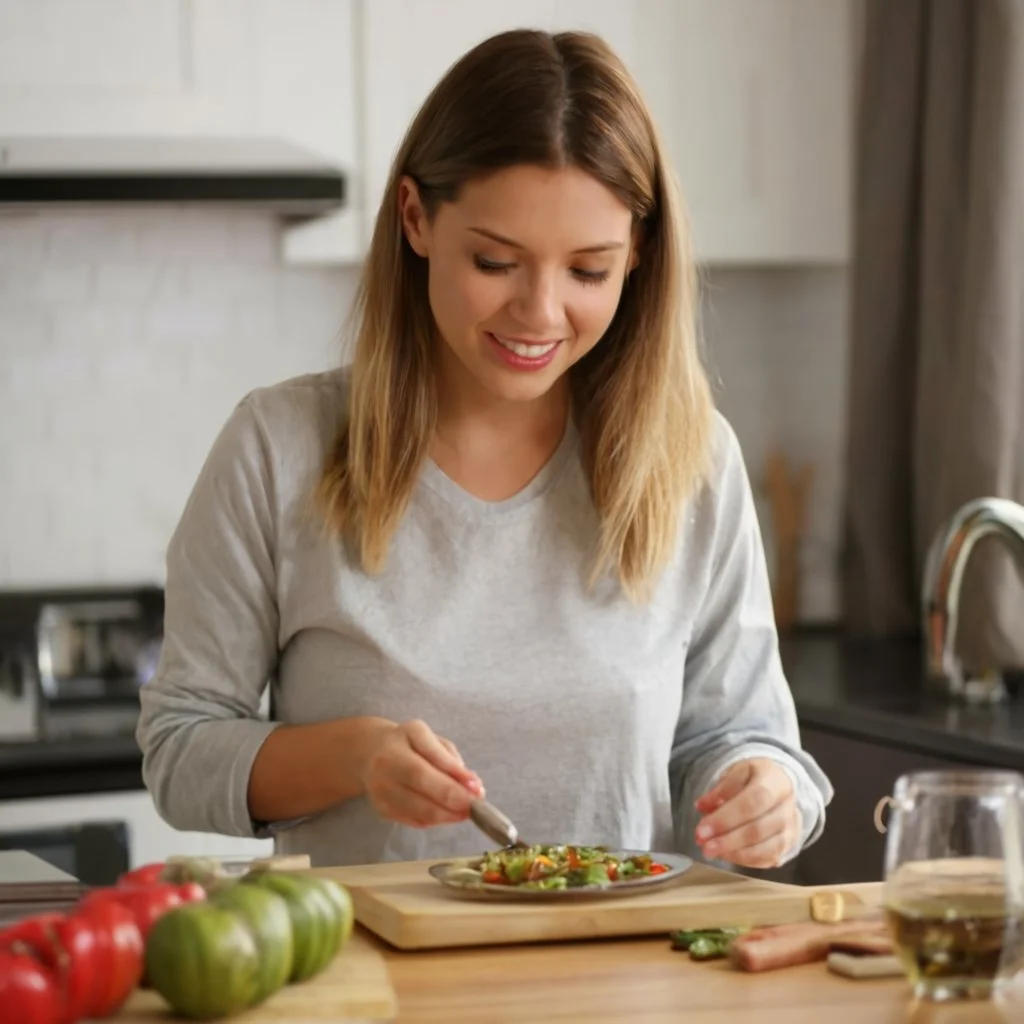Chocolate chips, those small, delectable morsels, have become a staple in kitchens worldwide. Renowned for their versatility in baking, they transform ordinary recipes into extraordinary treats. This guide delves deep into the world of chocolate chips, offering insights into their history, varieties, and the secrets to baking the perfect chocolate chip cookies.
History of Chocolate Chips
The journey of chocolate chips began in 1937 when Ruth Graves Wakefield, the owner of the Toll House Inn, decided to add chopped up bits of semi-sweet Nestle chocolate to her cookie dough. This ingenious idea led to the creation of the iconic Toll House cookie recipe, which has since become a household favorite. For a more detailed account of this fascinating history, explore A Brief History of the Chocolate Chip.
Types of Chocolate Chips
Chocolate chips are not just a key ingredient in baking; they are a versatile element that can transform any dessert. Here’s a breakdown of the various types available:
1. Semi-Sweet Chocolate Chips
- Description: The quintessential chocolate chips, semi-sweet, are known for their balanced sweetness and rich cocoa flavor.
- Uses: Ideal for classic chocolate chip cookies, brownies, and pancakes.
2. Milk Chocolate Chips
- Description: Sweeter and creamier than their semi-sweet counterparts, these chips are made with more milk solids.
- Uses: Perfect for sweeter desserts like chocolate chip blondies or milk chocolate fudge.
3. Dark Chocolate Chips
- Description: With a higher cocoa content, dark chocolate chips offer a less sweet, more intense chocolate experience.
- Uses: Great for recipes where a deep, rich chocolate flavor is desired, such as in chocolate lava cakes or dark chocolate mousses.
4. Bittersweet Chocolate Chips
- Description: Similar to dark chocolate but with an even higher cocoa content, bittersweet chips are less sweet and more flavorful.
- Uses: Ideal for sophisticated desserts like chocolate ganache or bittersweet chocolate tart.
5. White Chocolate Chips
- Description: Made from cocoa butter, sugar, and milk solids, these chips lack cocoa solids, offering a creamy, sweet flavor.
- Uses: Excellent in contrasting chocolate desserts, raspberry white chocolate cookies, or as a topping for hot cocoa.
6. Mini Chocolate Chips
- Description: These are smaller versions of any of the above types, providing a more even distribution of chocolate in each bite.
- Uses: Perfect for mini muffins, delicate cookies, or as a garnish on frosted cupcakes.
7. Flavored Chocolate Chips
- Description: These chips come infused with additional flavors like mint, caramel, or strawberry for a unique twist.
- Uses: They add a special touch to themed desserts, like mint chocolate chip ice cream or caramel chocolate chip bars.
8. Unsweetened Chocolate Chips
- Description: Containing no added sugar, these chips offer a pure, intense chocolate flavor.
- Uses: Best used in recipes where other ingredients add sweetness, like in some types of brownies or chocolate sauces.
9. Sugar-Free Chocolate Chips
- Description: Made for those monitoring sugar intake, these chips are sweetened with sugar alternatives.
- Uses: Ideal for diabetic-friendly recipes or for those looking to reduce sugar consumption in desserts like cookies or cakes.
Each type of chocolate chip brings its unique flavor and texture to desserts, allowing bakers to experiment and find the perfect match for their recipes.
Essential Ingredients for Chocolate Chip Cookies
Creating the perfect batch of chocolate chip cookies involves a blend of classic ingredients, each contributing to the flavor, texture, and appearance of the cookies. Here’s a rundown of the essential ingredients:
1. Flour
- Role: Provides structure to the cookies.
- Type: All-purpose flour is commonly used for its balanced protein content, which offers the right texture.
2. Sugar
- Role: Adds sweetness and affects texture.
- Types:
- Brown Sugar: Contributes to a moist, chewy texture due to its molasses content.
- White Sugar: Helps in spreading and creates a crispier edge.
3. Butter
- Role: Adds richness and flavor; its melting properties affect the cookie’s spread.
- Tip: Using unsalted butter allows better control over the salt content in the recipe.
4. Eggs
- Role: Bind the ingredients together, add moisture, and help in leavening.
- Tip: Room temperature eggs mix more evenly into the batter.
5. Vanilla Extract
- Role: Enhances the flavor of the cookies.
- Tip: Pure vanilla extract is preferred for its superior flavor compared to artificial vanilla.
6. Baking Soda or Baking Powder
- Role: Acts as a leavening agent, helping the cookies rise.
- Difference:
- Baking Soda: Creates a chewier texture.
- Baking Powder: Results in a cakier texture.
7. Salt
- Role: Balances the sweetness and enhances the overall flavor profile.
- Tip: A pinch of sea salt can be sprinkled on top of the cookies before baking for an extra flavor boost.
8. Chocolate Chips
- Role: The star ingredient, providing the iconic chocolatey bursts in every bite.
- Variety: Choose from semi-sweet, milk, dark, or bittersweet chips based on your preference.
9. Optional Add-ins
- Role: Provide additional flavor and texture.
- Examples:
- Nuts like walnuts or pecans for a crunchy texture.
- Oats for a chewier cookie.
- Dried fruits or spices for a unique twist.
Each ingredient plays a crucial role in the outcome of the cookies. By understanding their functions, you can tweak the recipe to suit your taste preferences and achieve chocolate chip cookie perfection.
The Science Behind Perfect Chocolate Chip Cookies
Baking is a science, and understanding the chemistry behind it can elevate your cookie game. The ratio of ingredients, the type of fat used, and the baking temperature all play crucial roles in achieving the desired texture, whether you’re aiming for chewy, crispy, or cake-like cookies. For an in-depth exploration of the science of baking, check out The Science Behind Chocolate Chip Cookies.
Step-by-Step Chocolate Chips Recipe
Embark on a baking adventure with this classic chocolate chip cookies recipe. Follow these simple steps to create delicious, homemade cookies that are perfect for any occasion.
Ingredients You’ll Need:
- 1 cup (2 sticks) unsalted butter, softened
- 3/4 cup granulated sugar
- 3/4 cup packed brown sugar
- 1 teaspoon pure vanilla extract
- 2 large eggs
- 2 1/4 cups all-purpose flour
- 1 teaspoon baking soda
- 1/2 teaspoon salt
- 2 cups (12 oz) semi-sweet chocolate chips
- Optional: 1 cup chopped nuts
Baking Instructions:
1. Preheat the Oven
- Set your oven to 375°F (190°C). This ensures the cookies bake evenly.
2. Cream the Butter and Sugars
- In a large bowl, thoroughly mix the softened butter, granulated sugar, and brown sugar until creamy.
3. Add Eggs and Vanilla
- Incorporate the eggs one at a time, then stir in the vanilla extract. This step is crucial for a rich flavor.
4. Mix Dry Ingredients
- In a separate bowl, combine the flour, baking soda, and salt. This blend provides the cookies’ structure.
5. Combine Wet and Dry Ingredients
- Gradually mix the dry ingredients into the wet mixture. Be careful not to over-mix.
6. Stir in Chocolate Chips and Nuts
- Evenly fold in the chocolate chips and, if desired, nuts.
7. Prepare the Cookie Dough
- Drop spoonfuls of dough onto ungreased baking sheets, leaving space for the cookies to spread.
8. Bake the Cookies
- Bake for 9 to 11 minutes or until they are golden brown.
9. Cooling Down
- Allow the cookies to cool on the baking sheets for a few minutes before transferring them to wire racks.
10. Enjoy Your Cookies
- Serve your freshly baked chocolate chip cookies with a glass of milk or your favorite beverage.
For additional insights into the perfect chocolate chip cookie, explore the science behind it at The Science Behind Chocolate Chip Cookies. Also, delve into the rich history of chocolate chips at A Brief History of the Chocolate Chip.
This recipe is more than just a set of instructions; it’s a gateway to creating warm, delightful memories in the kitchen. Happy baking!
Innovative Variations of Chocolate Chip Cookies
Chocolate chip cookies are a classic favorite, but there’s always room for a little creativity in the kitchen. Here are some innovative twists to the traditional chocolate chip cookie recipe that can add an exciting new flavor and texture to your baking.
1. Sea Salt and Caramel
- Description: Enhance the classic chocolate chip cookie with a sprinkle of sea salt and swirls of caramel.
- How to Make: After placing the cookie dough on the baking sheet, lightly press in a few caramel pieces and sprinkle a pinch of sea salt on top before baking.
2. Nutty Delight
- Description: Add a crunchy texture and nutty flavor by incorporating nuts into your dough.
- Suggested Nuts: Chopped walnuts, pecans, or almonds.
- How to Make: Mix your choice of chopped nuts into the dough along with the chocolate chips.
3. Double Chocolate
- Description: For the chocolate lovers, make your cookies doubly delicious with cocoa powder and chocolate chips.
- How to Make: Add 1/4 cup of unsweetened cocoa powder to the dry ingredients for a rich chocolatey dough.
4. Spiced Cookies
- Description: Introduce warm spices to your cookies for a unique twist.
- Suggested Spices: Cinnamon, nutmeg, or cardamom.
- How to Make: Add 1/2 teaspoon of your chosen spice to the flour mixture for a subtle yet delightful flavor.
5. Mocha Cookies
- Description: Combine the love for coffee and chocolate with this mocha variation.
- How to Make: Add 1 tablespoon of instant espresso powder to the wet ingredients for a subtle coffee flavor.
6. Peanut Butter Chocolate Chip
- Description: The combination of peanut butter and chocolate is timeless.
- How to Make: Add 1/2 cup of creamy peanut butter to the butter and sugar mixture for a deliciously rich flavor.
7. White Chocolate and Macadamia
- Description: Swap traditional chocolate chips with white chocolate and add macadamia nuts for a luxurious twist.
- How to Make: Use white chocolate chips instead of semi-sweet and add 1/2 cup of chopped macadamia nuts.
8. Oatmeal Chocolate Chip
- Description: Add oats for a chewier texture and a wholesome twist.
- How to Make: Reduce the amount of flour by 1/2 cup and add 1 cup of rolled oats to the dough.
9. Vegan Chocolate Chip Cookies
- Description: Make your cookies vegan-friendly without compromising on taste.
- How to Make: Use plant-based butter and egg substitutes, and ensure your chocolate chips are vegan.
10. Gluten-Free Chocolate Chip Cookies
- Description: A gluten-free variation that everyone can enjoy.
- How to Make: Substitute the all-purpose flour with your favorite gluten-free flour blend.
Each of these variations brings a unique flavor and texture to the classic chocolate chip cookie, making them perfect for experimenting and finding your new favorite. Happy baking!
Tips for Perfect Chocolate Chip Cookies
Always use room temperature ingredients for a smoother dough.
- Chill the dough before baking to prevent excessive spreading.
- Use a cookie scoop for uniformly sized cookies.
Pairing Chocolate Chips with Other Flavors
Chocolate chips pair wonderfully with various ingredients, creating delightful combinations. Try adding:
- Oats for a chewy texture.
- Dried fruits like cranberries or raisins for a sweet and tart contrast.
- Spices like cinnamon or nutmeg for a warm, aromatic twist.
After enjoying your homemade chocolate chip cookies, why not explore another family favorite? Check out our Velveeta Mac and Cheese – A Comfort Food Classic for a delightful and easy-to-make dinner option.
Sustainability in Chocolate Production
The production of chocolate chips involves considerations of sustainability and ethical sourcing. It’s important to be aware of the environmental impact and labor practices involved in chocolate production. For more information on sustainable chocolate practices, visit Sustainability in Chocolate Production.
Chocolate Chips in Other Desserts
Beyond cookies, chocolate chips can be used in a variety of desserts, such as:
- Brownies for added richness.
- Pancakes or waffles for a decadent breakfast treat.
- Homemade ice cream for a chocolatey surprise.
For those interested in the origins of the classic chocolate chip cookie, dive into the history and learn how to perfect the iconic treat with our guide on Mastering the Nestle Toll House Cookie Recipe
Frequently Asked Questions
Are Chocolate Chips Healthy for You?
- Answer: Chocolate chips, like any other sweet treat, can be enjoyed in moderation as part of a balanced diet. They contain sugar and fats, so they should be consumed in limited quantities. Dark chocolate chips are a healthier option as they contain higher cocoa content and less sugar, offering antioxidants and potentially some heart health benefits.
Are Chocolate Chips the Same as Chocolate?
- Answer: Chocolate chips are essentially small chunks of chocolate, but they are not exactly the same as bar chocolate. Chocolate chips are designed to maintain their shape during baking and often contain less cocoa butter than regular chocolate. This makes them ideal for baking, as they don’t melt completely but still provide a soft, gooey texture.
Can You Buy Chocolate Chips in England?
- Answer: Yes, chocolate chips are widely available in England. They can be found in the baking aisle of most supermarkets, as well as in specialty baking stores. In England, you’ll find a variety of chocolate chips, including milk, dark, white, and even flavored varieties.
Why Don’t Chocolate Chips Melt Anymore?
- Answer: Chocolate chips are formulated to be more heat-resistant than regular chocolate bars, allowing them to retain their shape when baked. This is due to a lower cocoa butter content and sometimes the addition of stabilizers. While they don’t melt into a liquid state, they do soften, providing the desired texture in baked goods. If your chocolate chips are not softening at all, it could be due to overbaking or using a type of chip that has more stabilizers.
Conclusion
Chocolate chip cookies are more than just a sweet treat; they’re a canvas for creativity and a testament to the joy of baking. Whether you’re a seasoned baker or a beginner, there’s always something new to learn and experiment with in the world of chocolate chips.


